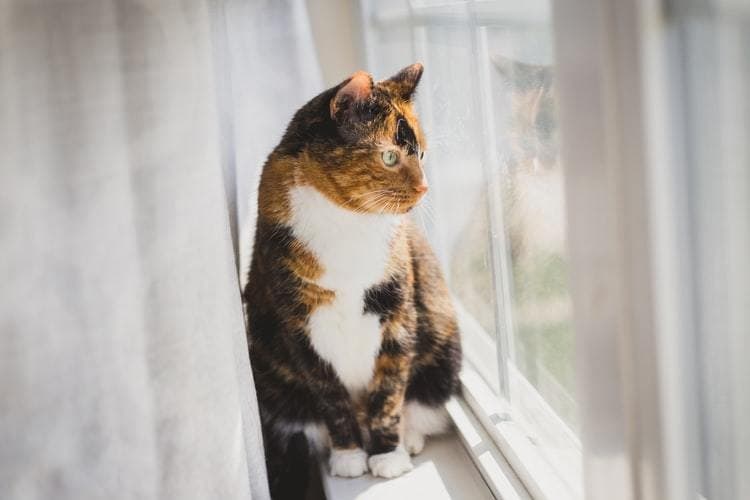Have you ever wondered why most calico cats are female? Well, it’s all about the power of genetics! This is also true for a similar coat pattern called tortoiseshell. Learn more about this interesting phenomenon with Basepaws.
Background information
Cats have a 19 pairs of chromosomes in each cell, which totals in 38 chromosomes. For comparison, humans have 23 pairs of chromosomes in each cell, whereas, dogs, have a whooping number of 39 pairs. Each chromosome, therefore, comes in two copies.
This means that all the alleles (variants of genes) on each chromosome will also be in two copies (one on one chromosome and the other on the homologous chromosome). The 19th pair of chromosomes are sex chromosome X and Y. Female cats carry two copies of X chromosomes in each cell (XX), while males have an X and an Y chromosome (XY).

Genetics behind calico coat pattern
Calico, or tricolor coat pattern, is the pattern of white fur with patches of two different colors, most commonly orange and black (or their diluted forms: cream, ginger, red and blue, tabby, gray). There is usually a significant amount of white in their coat, and the red and black patches form patchwork. A similar coat pattern is tortoiseshell, where there is a lot less white in the fur, and the colored patches are mottled. Thus, all calico cats are also tortoiseshell, but not all tortoiseshell cats are calico.
The gene which determines whether the coat will be orange or black (or one of the diluted colors) lie on the X chromosome. This is the gene for the orange color (O/o) and it comes in two variants (alleles) – the orange (O) and the non-orange (o). The orange allele O codes for the orange pigment “phaeomelanin”, and the non-orange o for the black/brown pigment “eumelanin”.
Female cats carry two copies of the X chromosomes in their cells. One of these chromosomes will be silenced in all of the cells by a random chance. This means that in some cells one X chromosome will be silenced and in the other cells the other one. It is completely random. If a female cat is a heterozygote for the orange gene (Oo), it will carry the orange allele (O) on one X chromosome and the non-orange allele (o) on the other X chromosome. The cells in which the first X chromosome is silenced will express only the non-orange gene, and therefore produce the black (or brown) pigment, and the other cells will produce the orange pigment.
This is why some patches on the coat will be orange and some will be black. The third color of a calico is a product of a completely separate gene. If they have the white patches, then these are a result of the white spotting gene, as explained in this article.

Male cats, therefore, cannot be calico, since they only have one X chromosome. They can therefore only carry one variant of the orange gene in all their cells. If a male cat is calico (or tortoiseshell), this means that it has two X chromosomes and an Y chromosome. This is a chromosomal mutation known as XX male syndrome. This mutation exists in humans too, and it's called Klinefelter syndrome.
Do you have a calico or tortoiseshell cat? Share your photo with us on social media!



